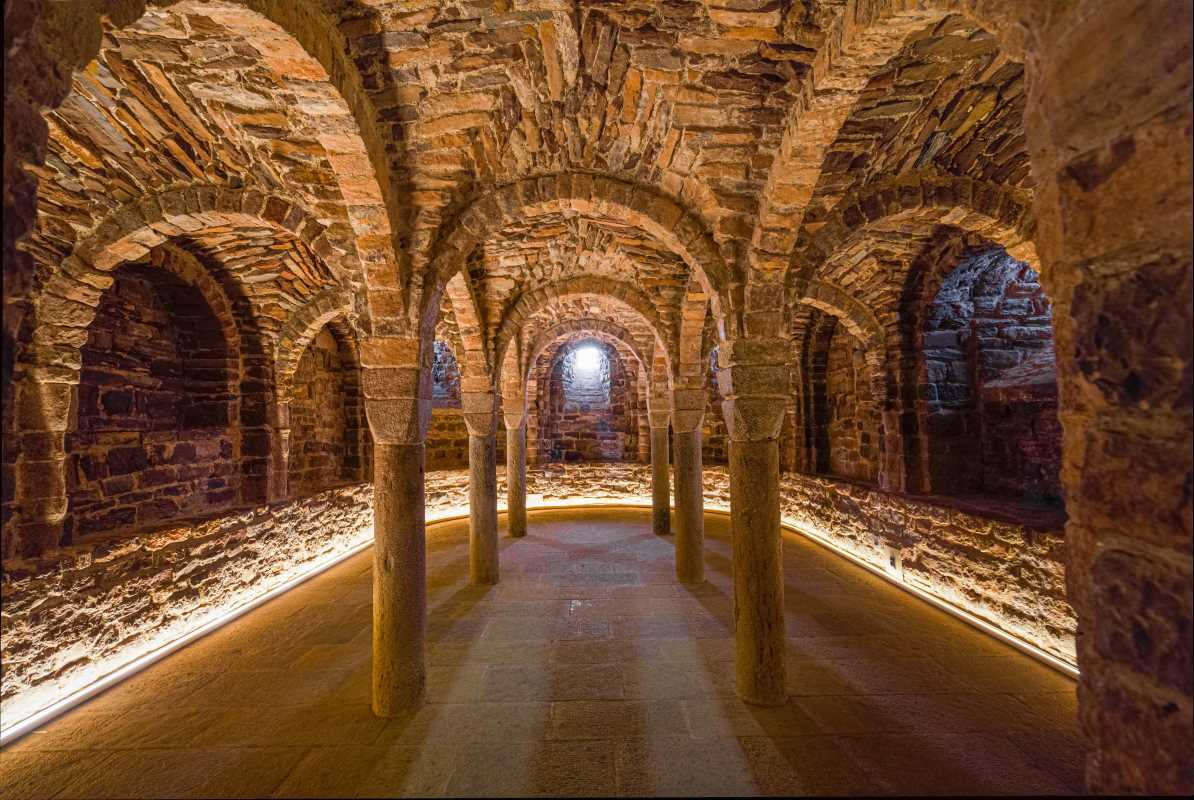Few places in the world hold secrets as fascinating as the rock-hewn churches of Ethiopia. These astonishing structures are carved directly into the earth, standing as a testament to human ingenuity and deep devotion.
Hidden within the rugged highlands of Lalibela and Tigray, these extraordinary monuments are as much a cultural discovery as they are a step back in time. With a story that weaves together history, architecture, religion, and art, Ethiopia’s rock-hewn churches invite travelers on a journey of wonder, exploration, and reverence.
A World Carved in Stone
Imagine walking across an uneven patch of landscape and suddenly finding yourself descending into a world made entirely of stone. This is what Ethiopia’s rock-hewn churches offer. They are not constructed in the traditional sense but are chiseled from the rocky terrain itself, making the earth their canvas and the tools their brush. Scholars trace their origins to the 12th or 13th century, with King Lalibela often credited for spearheading their creation to mimic Jerusalem. The result? Eleven interconnected churches that are as breathtakingly intricate underground as they are unassuming from above.
Each church tells a different story. Bet Giyorgis, for instance, stands as an iconic symbol of Ethiopia’s Christian heritage, shaped like a perfectly symmetrical cross and impressively preserved. Its sharp edges are a stark reminder of the advanced methods used by artisans and craftsmen at the time. Some say angels whispered to the builders, guiding their hands, while others chalk it up to sheer technical mastery. Either way, the churches remain a marvel of both faith and finesse.
Beyond the architectural marvel, their craftsmanship reveals a deeper cultural narrative. These structures were laboriously carved as places of worship to honor faith, community, and resilience. They aren’t just buildings; they’re living symbols of Ethiopia’s spiritual identity.
Old Rituals in Eternal Spaces
Walking into one of these churches is like stepping into a different world. The dimly lit interiors, the soft glow of candles, and the earthy scent of stone transport you to a time when life was simpler, and beliefs were unshakable. While the aesthetics are striking, it’s the living rituals performed day in and day out that give these spaces their unique energy.
Each church continues to serve as a sacred space for Ethiopian Orthodox Christians. Priests in striking robes lead chants, swinging incense burners in rhythm to the hymns. The faithful kneel on mats, heads bowed with devotion, connecting to generations who have worshiped in the same way for centuries. It’s not just a tourist site; it’s a sacred meeting place of past and present.
Religious traditions also shape the way the churches are maintained. Monks and priests serve not only as spiritual leaders but also as stewards of these historic sites, preserving them in ways that align with centuries-old customs. Visitors are encouraged to silently observe or participate in this deep spiritual experience, but don’t be surprised if a gentle goat wanders by mid-sermon. Life around the churches is vibrant and unfiltered.
The role these churches play in Ethiopian funerals and holiday festivities underscores their cultural significance. They serve as gathering places for communal celebration and grief, anchoring local lives in rituals that remain unbroken across time. From a spiritual perspective, they’re much more than architectural wonders; they’re Ethiopia’s beating heart.
The Mystery Hidden in Their Walls
While the sheer craftsmanship of the rock-hewn churches is jaw-dropping, the stories locked within their walls make them even more intriguing. With centuries under their belts, these structures have witnessed wars, invasions, and social transformation, yet they endure as stoic as the mountains they’re carved from.
The design of the churches is rife with symbolism. For instance, in Bet Maryam, intricately carved windows take the shapes of crosses and other symbolic patterns. Even the trenches and tunnels connecting the churches aren’t random; they echo biblical tales and ancient protective strategies. Imagine a church that doubles as both an earthly sanctuary and a symbol of divine geometry, that’s the artistry at play here.
Local lore only deepens the mystery. One popular tale recounts how human laborers worked by day while angels took over by night, speeding up the building process. Another suggests that the churches were carved in record time as part of King Lalibela’s religious vision. Whether you view these stories as theology or myth, they add layers of richness to the churches’ cultural narrative.
Interestingly, the materials and tools used to carve these masterpieces remain speculative at best. With no written records, it’s hard to decipher exactly how ancient craftsmen achieved such precision, especially with the limited technology of the time. Did they rely on hammers, chisels, and trial and error? Or was there some lost art, a hidden knowledge, that has yet to be unearthed by modern archaeology?
The Journey of Getting There
Reaching these rock-hewn marvels isn’t like pulling into a parking lot at your local museum; it’s an adventure. Whether you’re trekking up rugged paths in Tigray to discover hidden cliff-side churches or wandering through Lalibela’s intricate underground labyrinth, the journey is as rewarding as the destination.
The churches in Lalibela are relatively accessible, with pathways leading visitors to its most famous structures. Bet Giyorgis, arguably the crown jewel, is only a short walk but leaves a lasting impression. Exploring the network of trenches and passageways feels as though you’re unearthing the secrets of an ancient civilization with every step you take.
On the other hand, the churches in Tigray are not for the faint of heart. Some are perched precariously on cliff faces, accessible only through steep climbs that’ll demand your inner daredevil. But the breathtaking views and the sense of accomplishment on reaching these secluded gems make the effort worthwhile.
Travelers visiting the churches will also notice the warmth of the surrounding communities. Locals sit under trees, weaving basket lids or sipping strong, aromatic coffee. Don’t be surprised if someone shares a story or guides you toward their favorite vantage point. This blend of cultural hospitality and natural beauty makes the trip truly unforgettable.
If you go, pack comfortable shoes, take water, and prepare for a marvel that tickles all your senses. Remember, even getting dusty along the way is part of the charm.
What to Know Before You Explore
Planning a visit to Ethiopia’s ancient rock-hewn churches requires a mix of curiosity and preparation. Whether you’re a history buff, a cultural explorer, or a spiritual seeker, there’s something here for everyone.
Take note of these tips to make the most of your experience:
- Dress modestly and respectfully to visit these spiritual spaces, as they are active churches.
- Hire a local guide for insights and fascinating stories you might miss wandering alone.
- Visit during Timkat (Epiphany) in January to witness vibrant celebrations.
- Bring socks or comfortable footwear, as shoes aren’t allowed inside the churches.
- Be ready to engage with friendly locals who are happy to share stories of their heritage.
Travelers often leave Ethiopia changed, inspired by the resilience and creativity embedded in these sacred spaces. Visiting isn’t merely about seeing the architecture; it’s about understanding a culture that honors its past while continuing to thrive in its present.
Whether you’re craning your neck to admire a soaring rock ceiling or sipping coffee in a village before your next hike, Ethiopia’s rock-hewn churches offer an experience that’s equal parts discovery and reflection.







